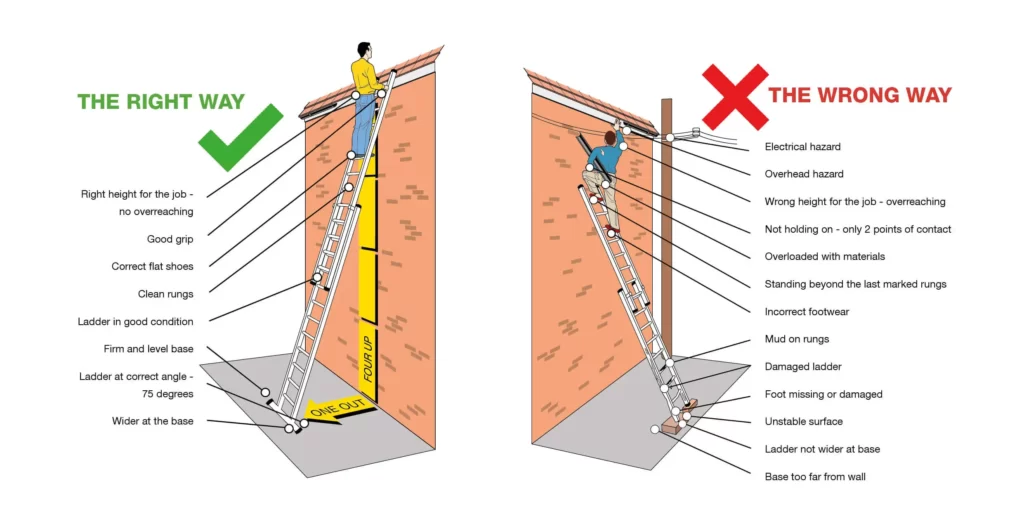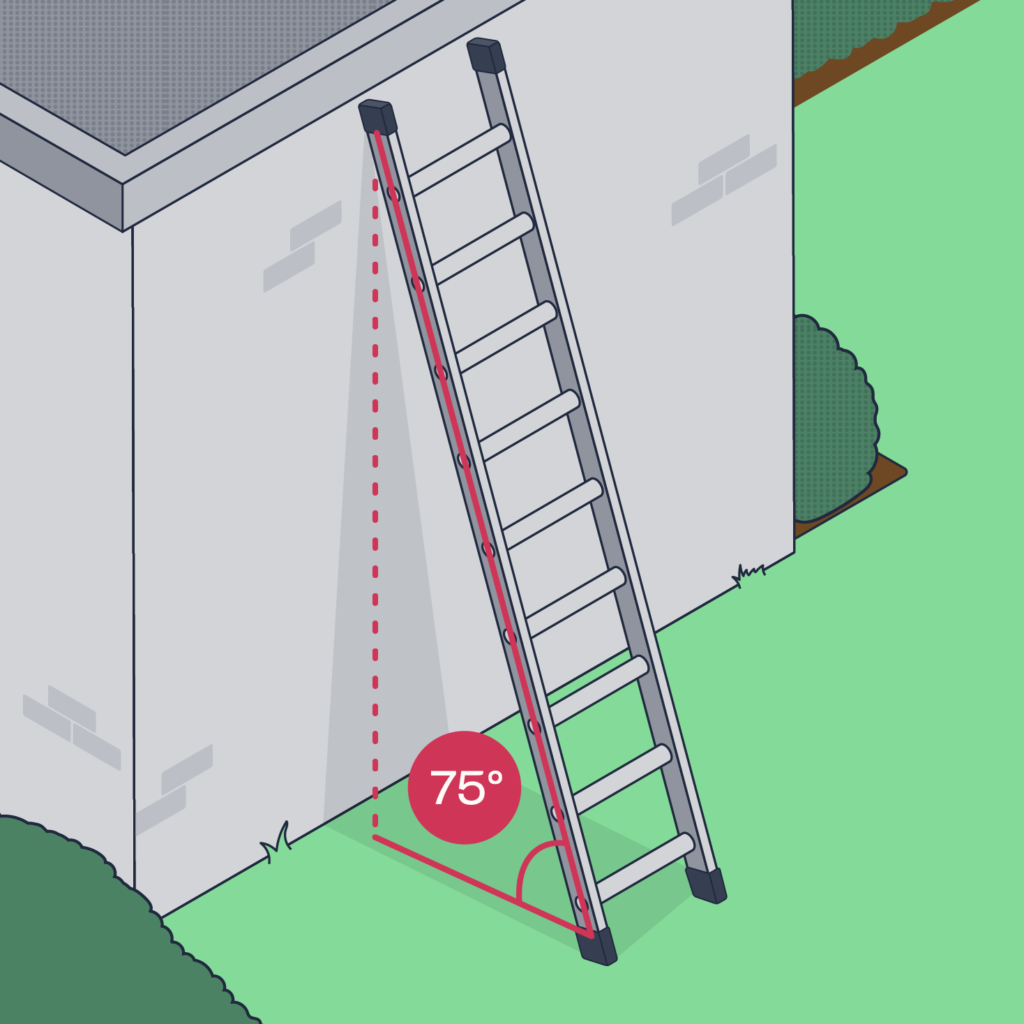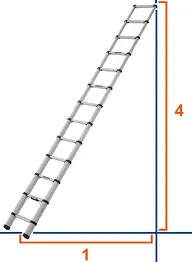Ladders are indispensable tools in various domestic and professional scenarios, providing us with the necessary height to carry out various tasks. However, the use of a ladder isn’t without potential risks. In fact, improper ladder usage can result in unfortunate accidents, often due to incorrect positioning and inadequate safety measures. A critical aspect of safe ladder use involves achieving the optimal ladder angle.
An inappropriate ladder angle hampers your task and increases the likelihood of slips and falls. This comprehensive guide delves into setting the perfect ladder angle and elucidates essential safety guidelines for confident and secure ladder usage. Let’s climb the ladder to safety, one rung at a time!
Ladder Angle At Which It Should Be Positioned
Positioning a ladder properly ensures safety while climbing or working from a height. There are multiple factors to consider, such as the ladder’s height, the angle at which it is set, and the location of its base.
The ladder’s angle should ideally be 75° to the horizontal or at a ratio of 1:4 distance away from the wall to height (1 out 4 up). Imagine an almost upright ladder with a slight tilt toward the wall to visualize this. However, this doesn’t mean this angle suits every ladder. The angle should be adjusted based on the height of the ladder.

A lesser angle can be used for smaller ladders, such as step ladders that are only a few feet high, as there is less risk of the ladder tipping over due to its short stature. On the other hand, larger ladders, like extension ladders that can extend up to 20 feet or more, should be positioned at a steeper angle. This is because the higher the ladder, the more unstable it becomes, and the steeper angle provides more stability and reduces the risk of tipping over.
Another important factor to consider is the placement of the ladder’s base. Ideally, it should be placed on firm and level ground. This allows for the most stability and reduces the risk of the ladder sliding or tipping over. If the only available ground is soft, like sand or soil, you can improve the stability by digging out a shallow hole for the ladder’s base to rest in. This provides a more secure footing and helps prevent the ladder from shifting or tipping over.
Having at least two people present when positioning and using a ladder is also a good practice. One person can stabilize the ladder’s base while the other climbs. This way, the person at the base can also watch out for any issues that might arise while the other person is climbing, providing extra safety.
Lastly, the 1:4 rule is a common guideline for setting up ladders. According to this rule, for every four feet of height, you want to reach, the ladder’s base should be one foot away from the wall. So, if you’re placing a ladder against a wall to reach a height of 20 feet, the ladder’s base should be 5 feet away from the wall. This helps maintain the ladder’s balance and prevents it from leaning too far back or forward. Considering these factors, you can position a ladder safely and reduce the risk of accidents.

Rules for Ladder Safety
Here are a few key safety measures when using ladders:
- Choosing the Right Ladder: Your chosen ladder should be appropriate. This includes considering factors like ladder height, weight capacity, and material.
- Inspection of Ladder: Before using the ladder, inspect it thoroughly to ensure it is in good condition. This includes checking for loose rungs or any signs of damage or wear.
- Setting Up the Ladder: The ladder must be set up correctly. This involves ensuring a stable base, the appropriate angle, and sufficient overlap between sections for an extension ladder.
- Safe Usage Practices: Always use the ladder safely. This involves climbing slowly, maintaining three points of contact (two feet and one hand or two hands and one foot), and never leaning too far to one side or the other.
Following the 4:1 Rule
The 4:1 rule is a key safety guideline in setting up a straight ladder. For every four feet of ladder height, the base should be positioned one foot away from the wall. A 16-foot extension ladder, for example, should have its base positioned 4 feet away from the wall. A stepladder should always be locked in a fully-open position before usage. Due to its size and weight, raising an extension ladder should ideally involve two people.

In the case of uneven ground, it’s recommended to use boards or other stable materials to level out the base. For softer surfaces, turn the ladder feet up to create spikes for stability. If using a ladder to access a roof, ensure it extends at least three feet above the roof edge.
Conclusion
Safety should be paramount when using a ladder. Understanding the ideal ladder angle and adhering to safety measures can prevent potential accidents. Always have someone hold the ladder’s base while climbing, and never hesitate to seek assistance if you’re unsure of the ladder’s positioning.
You can complete your tasks efficiently and safely by adhering to these ladder safety guidelines. Remember, it’s about achieving the correct ladder angle and following best practices for ladder usage.
We’d love to hear your tips for ladder safety! Feel free to share them in the comments section below!

